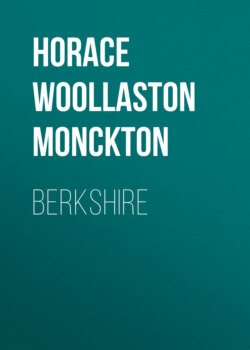Читать книгу Berkshire - Horace Woollaston Monckton - Страница 5
На сайте Литреса книга снята с продажи.
2. General Characteristics.
ОглавлениеTable of Contents
Berkshire is an inland county separated from the English Channel by the full width of Hampshire. The river Thames, however, gives a waterway to the sea, and the county town, Reading, is especially well served by railways and has mainly on that account become the centre of trades of great importance. Reading biscuits and Reading seeds have a world-wide celebrity, and printing is now extensively carried on in the town.
Berkshire is, however, essentially an agricultural county, and some of the most fertile corn land in England is found in it. Until quite modern times great tracts were waste, or woodland and moorland. But these, though of no agricultural value, are for the most part very good to live in and are now being rapidly built over.
The county is divided by nature into three well-marked districts. The first of these natural divisions is formed by the Vale of White Horse and the part of the county north of it, as well as the low-lying ground between Wallingford and Steventon. The soil is clay and sand, and a few beds of limestone occur in places.
The second division is the great chalk district forming central Berkshire, with Ashbury, Wantage, and Wallingford on the north and Hungerford, Kintbury, Chieveley, Bradfield, and Tilehurst on the south. The tract included in the curve of the river Thames between Twyford and Maidenhead also belongs to the chalk district. The chalk is not always at the surface of the ground, for it is often covered by thin beds of clay or gravel, but it will always be found at a little depth below the surface in this district.
The Ridgeway—Uffington Castle in the distance
The third division comprises the forest country of the southern and south-eastern parts of the shire. Its northern boundary runs from Inkpen in the west to Maidenhead in the east, but in places tracts north of this line belong to the third division and in other places the chalk comes to the surface south of it. The soil in the third division consists of clay and sand with no limestone. These clays and sands are very thick in the south-east of the county, but everywhere the chalk is below them if we go deep enough.
The chalk downs of the central division are dotted over with mounds and earthworks, probably for the most part the work of man before the Roman occupation, for it was an inhabited part of the county in the time of the Britons. On the other hand the Vale of White Horse division was in those days mainly or wholly uncultivated, but it is now the most fertile part of Berkshire. The south or forest division has been thinly populated up to quite modern times, though the Roman town of Silchester stood in the Hampshire part of this forest country.
Berkshire is almost all within the drainage area of the river Thames and its tributaries, and the natural line of communication between our county and the sea is by river, Windsor being some 85 miles from the Nore.
The estuary of the Severn is less than 32 miles from Faringdon, and there seems to have been a tolerably good road from Berkshire to the west coast in quite early times. Formerly a very usual line of communication between our county and the sea was from the south coast across the chalk downs. Hungerford is only 35 miles from Southampton, and the roadways across the Chalk are very old and fairly direct.
